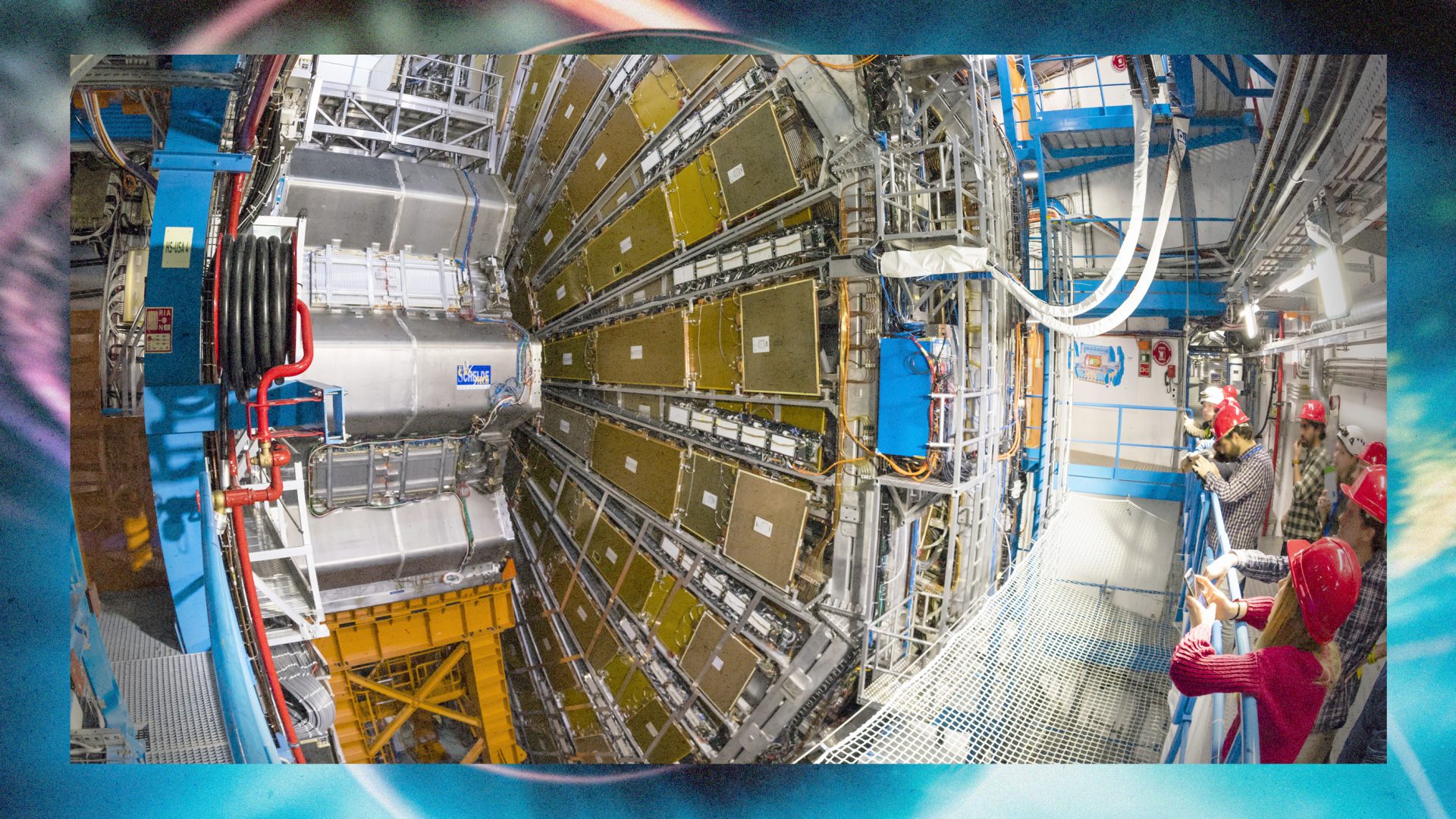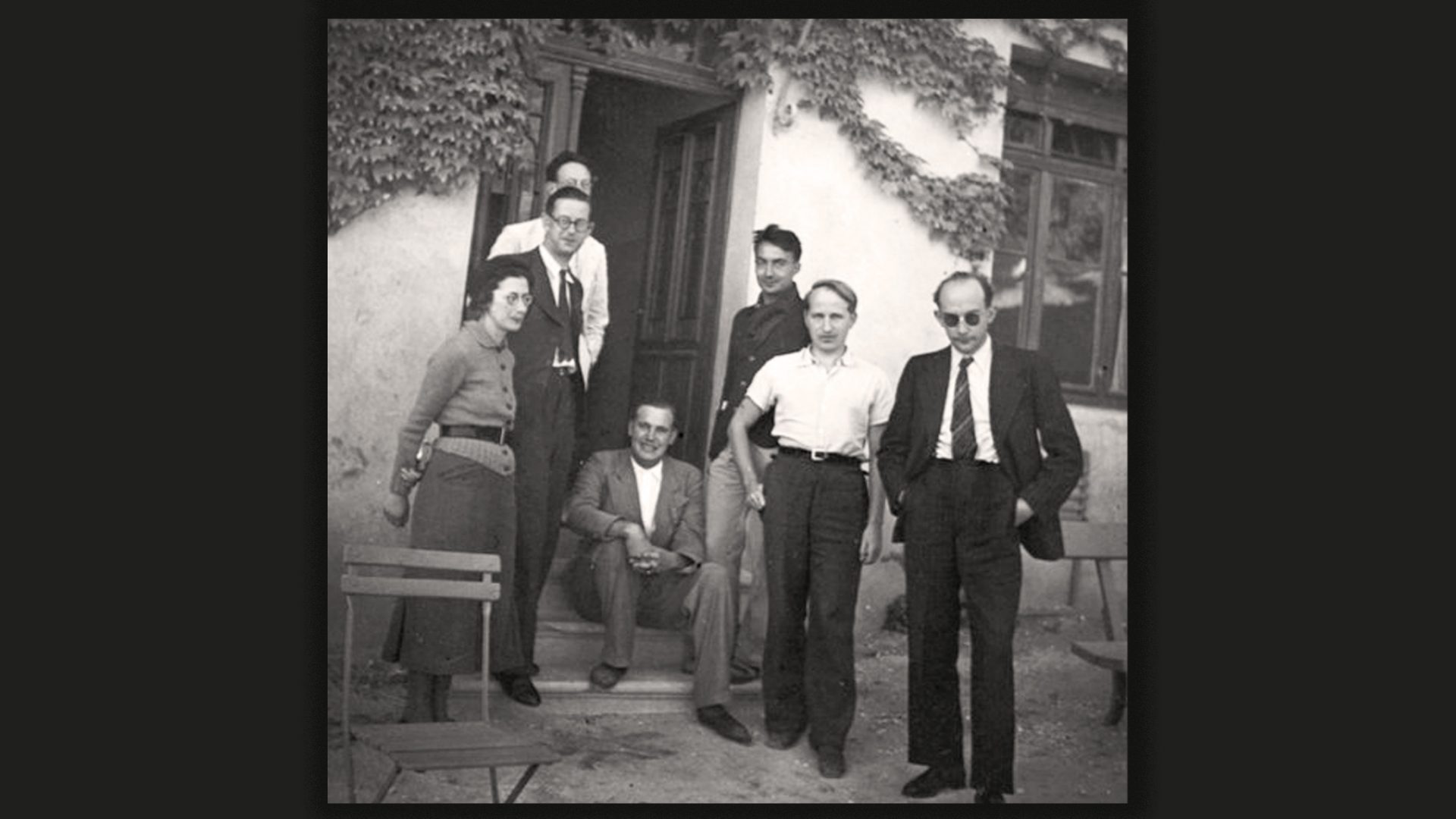If, like me, you’re not a particle physicist but like to take an interest in what that field is up to, you may well find it as challenging, not to say disheartening, as I do. Every so often an important new paper comes out, about particles you’ve not only never heard of but don’t even know how to pronounce. I’m going to give the title of one of the latest, just to see whether the New European’s typographers are up to it: “Study of Λ0b and Ξ0b decays to Λh+h′− and evidence for CP violation in Λ0b→ΛK+K− decays”. Seriously.
Here’s why you might want to bother trying to decipher that: the new finding, obtained using the Large Hadron Collider (LHC) particle accelerator at Cern, near Geneva, might offer a hint of why there is any matter in our universe at all. It might help to explain why you’re even here.
The puzzle is one of the deepest and most perplexing in modern physics: why there is much more matter than antimatter in the universe. Every known fundamental particle has a twin made of antimatter, and if these two types of stuff come together, they annihilate one another in a burst of energy – generally, a flash of gamma rays. Since matter and antimatter seem to be entirely equivalent but opposite, we should expect the Big Bang to have generated equal amounts of both. But if that had been so, they’d have destroyed one another in the early universe. On the contrary, all the stars and galaxies we can see today are made of matter alone. Where did all the antimatter go? Was it ever even there?
The principle that makes matter and antimatter equivalent is called CP symmetry. The imbalance we see today between the amounts of each of them therefore seems to demand that the laws of physics violate this symmetry: that under some conditions, antimatter is not after all a perfect mirror image of matter.
We’ve known since the 1960s that some processes involving fundamental particles – specifically, in a family called mesons – do violate CP symmetry. The problem is that those violations, explained in work that won the 2008 Nobel prize in physics, are much too small to account for the excess of matter over antimatter. There need to be other sources of CP violation too.
The Cern experiments, performed by a team called the LHC Beauty (LHCb) Collaboration, have now furnished evidence of such violations in new places. One result shows that it crops up when a type of particle called a B meson decays – falls apart – into two others with names I won’t burden you with. The high-energy collisions of the LHC are needed to make B mesons in the first place, but they’re too unstable to last for long.
The LHCb experiment has been running for over a decade with the explicit goal of shedding light on the matter-antimatter asymmetry by studying B mesons, which contain so-called “beauty” quarks – hence the project’s name. (These are also commonly known as bottom quarks, but the Bottom Collaboration was never going to be a thing). A second experiment by the LHCb team found another CP-violating decay in particles called Λ b baryons (that’s what spawned the title above), heavier cousins of the protons and neutrons in regular atomic nuclei.
Does this mean the scientists have discovered the reason for the matter-antimatter imbalance? Of course not, silly – this is modern particle physics, where profound questions must be plumbed from the slightest of hints provided by the behaviour of obscure particles that exist only fleetingly at the gargantuan energies generated in particle accelerators.
In general, the answers seem likely to lie in “new physics” that our existing theoretical framework, called the Standard Model, can’t encompass. There’s no matter-antimatter asymmetry in the Standard Model, so the source of the necessary CP violation must lie outside it. But where to look?
The new CP violations for B mesons and Λ b baryons don’t give us that source directly – they needn’t in themselves fall outside the Standard Model. But to account for these observations, physicists will need to carry out calculations that may bring to light some subtle flaws in that picture.
It’s a game requiring immense patience as one tries to triangulate to the answer. “The more systems in which we observe CP violations and the more precise the measurements are,” says LHCb spokesperson Vincenzo Vagnoni of the National Institute for Nuclear Physics in Florence, “the more opportunities we have to test the Standard Model and to look for physics beyond it.”




